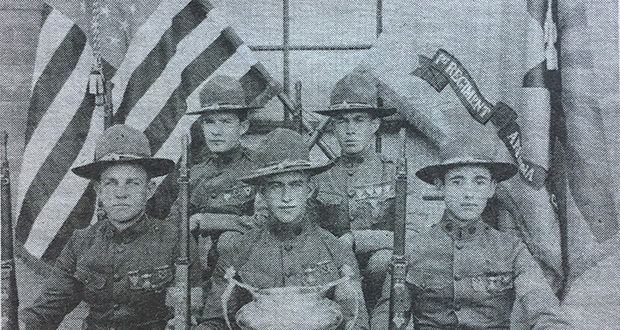The First Maricopa County Courthouse
Arizona Capitol Reports Staff//September 8, 2006//[read_meter]
The first Maricopa County courthouse was the tallest building in Phoenix when it was completed in 1884. At that time, it was only the fourth brick building to stand in Phoenix. The others included a local grocery company, a church and a private residence on Central Avenue.
The original building cost $70,000. By 1894, a new jail and sheriff’s office were added to the structure. The addition cost the county another $55,000. Another addition was built in 1895 to serve the needs of the county treasurer.
Gravel paths lead to the courthouse. The building was originally surrounded by sagebrush. A row of cottonwood tress ran along Washington Street and provided the only landscaping near the building. Native Americans tied their horses to the sagebrush when they came to town to trade.
Dave Turner became the county gardener in 1894 and served in that capacity for several decades. Over the years, he managed to change the sagebrush into grass, flowers and trees. Turner convinced the board of supervisors to allow him to use prisoners to work around the property. He commented that he always had plenty of help since the jail was always filled with cowboys and miners.
Turner brought Bermuda grass to Phoenix. He also was reported to be the first person to grow flowers in Phoenix. Surprisingly, he was not able to grow roses at the courthouse.
No hangings ever took place at the courthouse. John Price was sentenced to be hung there, but he escaped the jail before the sentence was carried out. He was shot and died during his recapture.
Probably the most sensational event to take place at the courthouse was the Tewksbury-Rhoades murder trial that capped the events surrounding the Pleasant Valley war. Tewksbury and Rhoades were accused of killing Tom Graham in an ambush near Mesa. The Pleasant Valley war was a conflict between cattlemen and sheepmen.
The trial lasted a week and was drawing to a close on a Saturday afternoon. The widow of Tom Graham was in the courtroom and had testified as part of the trial. Suddenly, she rose and crossed the courtroom. She stuck the muzzle of a .45-caliber revolver into the pit of Rhoades’ stomach and pulled the trigger.
Mrs. Annie Graham had smuggled the gun into the courthouse in her purse. As she crossed the courtroom, she pulled the gun out of her purse. When she pulled the trigger, the hammer caught on the velvet lining of her bag. The gun did not fire. Not surprisingly, Rhoades was found not guilty of the murder. Tewksbury was cleared in subsequent trials.
In 1912, the courthouse was center stage acting as the backdrop for the festivities surrounding Statehood Day on Feb. 14, 1912. After George W. P. Hunt was sworn in at the Capitol as the first governor of Arizona, a grand parade was held. Governor Hunt’s reviewing stand was built in front of the courthouse. He was joined by Rep. Carl Hayden, Phoenix Mayor Lloyd B. Christy and William Jennings Bryan from Nebraska who was vacationing in Arizona.
The parade was an impressive affair including many different groups. Marchers included school children, Indian cadets, National Guard units, many bands, veterans from the Spanish-American war, veterans from both the Confederate Army and Grand Army of the Republic, the Red Men, The Loyal Order of Moose, the Knights of Columbus and the Elks.
Within a few years of this penultimate event, the growth of the county outstripped what the first courthouse of Maricopa County could provide. The building was condemned and replaced in 1928.
— By Mike Miller. Photo courtesy of Arizona State Library, Archives and Public Records, Archives Division, Phoenix, #98-9892.


















